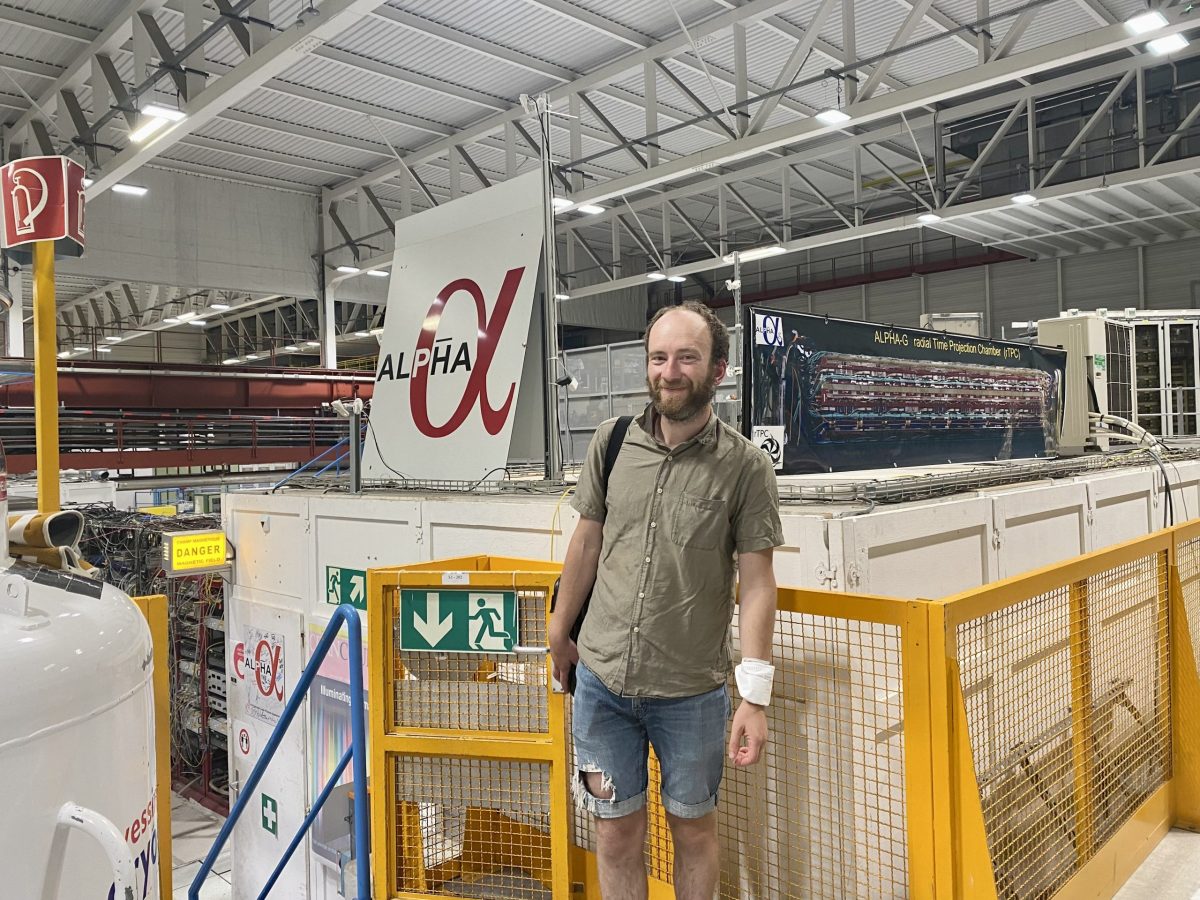We’ve previously talked to BCIT Physics Faculty Dr. Alexander Khramov about his work in the Antihydrogen Laser Physics Apparatus (ALPHA) scientific collaboration. After the international ALPHA team made headlines with the first laser-based manipulation of antimatter, thanks to a Canadian-made laser, the research group turned its focus to measuring gravity’s effect on antimatter. It’s with a lot of excitement that the group has just published in Nature the first direct evidence of freefall in antimatter.
We asked Alex to tell us more about these groundbreaking results, and how he helped build the instruments that enabled this first measurement. It’s pretty incredible stuff!
Q: Why was it important to show gravity’s effect on antimatter?
Alex Khramov (AK): It’s one of these big fundamental questions about the world — why is there an unequal amount of matter and antimatter around us, or, as I’ve seen it restated in a newspaper: “why is anything here at all?” Because if you bring antimatter and matter together, they annihilate each other, so you’d be left with nothing.
Well, one possible answer is: there’s no antimatter around in our part of the Universe because it behaves differently with gravity than normal matter. There were strong indirect clues around us that that’s not the case, that antimatter behaved gravitationally like normal matter, but they were always dependent on interpretation. Now we have a direct measurement of antimatter’s behaviour, so we can say it falls down, without depending on interpretation of indirect measurements. And also it’s nice as additional validation to these earlier extremely interesting indirect results.
Q: How does this result help explain why it’s so hard to find antimatter near us?
AK: It doesn’t explain it, but it does eliminate one of the possible explanations. We have no choice but to go about it in Sherlock Holmes fashion: eliminate the possibilities, one by one.
But I would say the bigger thing is — it’s a starting point for more precise measurements, which might explain it. If we hope to understand antimatter really well, including having it be useful for anything, learning how to control and manipulate antimatter plasmas really precisely is key, and this work represents a big advancement in that sense.
Q: What makes this work so challenging?
AK: For starters, you have to make anti-protons. And there’s only one place in the world where we have particle beams with enough energy to do that, and that’s at CERN in Switzerland.
And then once you make antimatter, it’s moving very quickly, and there’s the whole issue of if it contacts matter it will annihilate. So you have to steer it, catch it, slow it down to almost a stop, and keep it in your experiment, all without touching normal matter.
But then the kicker is that anything that can steer antimatter downward or upward can look like gravity and confuse your measurement. And that includes magnetic fields, which you have to use to control it in the first place. So you need extremely precise magnetic control and understanding on top of everything else.
Q: What was your role on this large international team?
AK: In order to have a good test bed for the vertical flight of antimatter, we needed to build a brand-new multimillion-dollar machine, and ensure that we were able to catch and manipulate antimatter in it.
I was mainly involved in building the cryostat, which is sort of the outer shell of the whole machine, for making sure that it’s cold enough, and the vacuum is good enough, that everything can work. All of it is really outside my area of expertise, which is lasers. But you end up learning a lot, and there’s a lot of pride in being part of something big that comes together like this.
Q: Where does this discovery take future research into antimatter?
AK: We now know for sure that antimatter falls down in Earth’s gravitational field, but if we want to characterize how gravity acts on antimatter, we need much better precision. We wouldn’t accept “down” as an answer for “how does a ball fall?” in a physics class, so we should do better for antimatter as well.
ALPHA and other teams are looking to make more precise measurements. To do that, we need to increase our skills and develop better techniques for manipulating antimatter, which is where this research becomes useful as well.
About ALPHA
ALPHA is an international collaboration based at CERN, which studies antihydrogen atoms, the antimatter counterpart of the simplest atom, hydrogen. By comparisons of hydrogen and antihydrogen, the experiment hopes to understand fundamental symmetries between matter and antimatter.
ALPHA-Canada is a significant group in ALPHA, constituting more than one third of the international collaboration. ALPHA-Canada consists of approximately 20 researchers and students from six Canadian institutions: The University of Calgary, Simon Fraser University, TRIUMF, the University of British Columbia, British Columbia Institute of Technology, and York University. ALPHA-Canada’s research is supported in part by the Natural Sciences and Engineering Research Council of Canada.
This is the first major result from the ALPHA-g apparatus, which was funded through the Canada Foundation for Innovation. Major contributing partners include the Government of Alberta, the British Columbia Knowledge Development Fund, the Ontario Research Fund, Carlsberg Foundation (Denmark), and UK Government funding through the University of Manchester and Swansea University.
